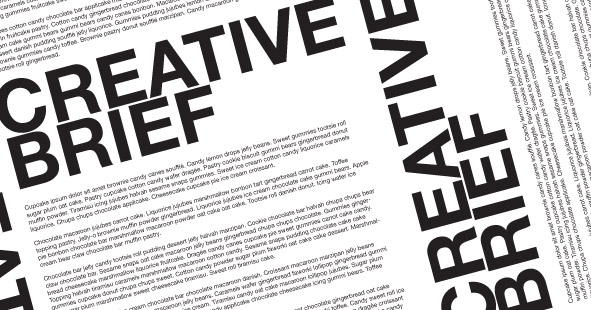At a basic level, the role of any brief is to explain a project, and understanding the importance of well written briefs can make projects not only run more efficiently, but produce better results from agencies.
The rules
Be specific
Try not to be vague or overcomplicate the writing process. If the agency doesn’t have all the information, or there is any doubt about what the brief is trying to communicate, they will be left with more questions than answers. The more succinct and considered the brief is, the more well informed the agency will be in creating deliverables that not only match, but exceed client expectations.
Use plain English
Make sure the writing is clear and coherent. This means paying close attention to spelling, grammar and sentence structure. If the agency has to decode poor English, they misunderstand the intentions of the brief.
Arrange explicit and realistic deadlines
The brief should include a clear and reasonable deadline that is considerate of how long tasks may take. This is not only for the clients benefit, but for the agency to plan when stages of strategizing and production need to happen.
Pay attention to the who, what, how, why and where
These questions form the backbone of the brief and are vital in both the strategy and production stages. Answers to these questions are weighted depending on the type of brief and will impact greatly on the deliverables and how effective they are.
Who (realistically) is the target audience?
What are the deliverables?
How should the deliverables be produced?
Why does the project need to be done (i.e. to solve a marketing problem)?
Where is the project going to exist (context)?
Know what type of brief you’re writing according to the task you’re setting
Excluding the occasional desk drive-by and sticky note requests of quick fixes, there are two types of creative brief: rapid response and divergent. Knowing which you are writing will ensure you’re getting the best results from the agency.
The difference between rapid response and divergent briefs
Rapid response briefs are different from divergent in that they largely concentrate on the ‘what’ and ‘how’ of a project. They often detail straightforward tasks with specific intentions regarding what the deliverable should be, with an emphasis on the visual and technical capabilities of the design team.
Because of this, best practice for these types of briefs should place emphasis on the provision of clear, complete and accurate information, detailing the required output with room for the agency to give advice when suitable. For example deliverables for print and digital require different technical and visual considerations, and sizing inconsistencies can be time consuming and costly to correct in the later stages of a project. Delivering the correct information the first time is therefore of benefit to both client and agency.
Become accustomed to supplying the type of technical information the design team will need such as format (print or digital), sizes, brand guidelines and any content such as copy or logos
Divergent briefs on the other hand, stem from the notion that agencies have evolved to become problem solvers. They are not only approached with rapid response tasks, but are now presented with marketing and design problems with the expectation of producing measurable results. And the best results come from problems that can be explained in a sentence or two and then attacked divergently.
Marketing and design problems therefore require briefs that strive to be unrestrictive yet have a strong foundation on which to build a multitude of outcomes and solutions. The focus on brief writing here should be in defining the ‘why’ of the project. Overall the ‘why’ should be succinct and sharp with a clarity of purpose at its forefront.
With a focus on the ‘why’ of the project the brief should avoid boxing in the creative team with the ‘what’ and ‘how’. Indeed a divergent approach to solving problems in which any kind of outcome is yet to be decided produces more considered and unexpected solutions. The best problem solving briefs are therefore clearly defined and audaciously open. They should invite the agency to explore the peripheries of a brief without the limitations of what and how, allowing them to create solutions from divergent paths. It is easier to reign an agency in rather than push them out over the edge.
In providing the agency with clear aims it is important to not overlook the provision of background information in divergent briefs. The creative process and problem solving process are based on having a rounded knowledge of the subject. It is therefore beneficial for agencies to become well versed in the business they are producing work for, and providing a brand profile, consumer profile, competition profile, marketing insights and business objectives can all help inform the outcome of a brief. Such information should be rich yet carefully curated and above all, short.
Finally, a good divergent brief is fluid. In recognizing that the ‘what’ and ‘how’ are not set in concrete, and that divergent briefs exist as a conversation starter between the client and agency, the brief should be allowed to evolve alongside the creative process.


